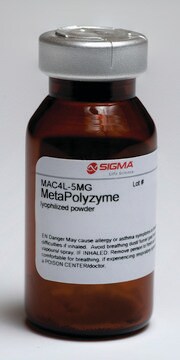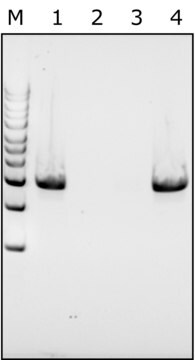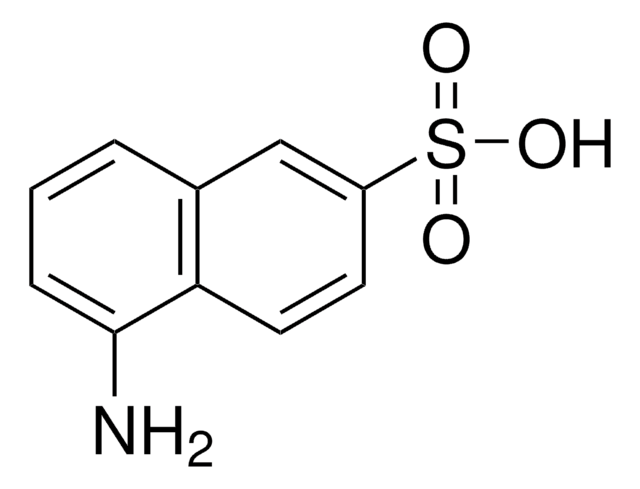L2898
Lysostaphin from Staphylococcus staphylolyticus
aseptically filled
Synonym(s):
Glycyl-glycine Endopeptidase
About This Item
Recommended Products
sterility
aseptically filled
Quality Level
form
powder
specific activity
>500 units/mg protein
mol wt
25 kDa
composition
Protein, 40-70% biuret
antibiotic activity spectrum
Gram-positive bacteria
Mode of action
cell wall synthesis | interferes
storage temp.
−20°C
Looking for similar products? Visit Product Comparison Guide
General description
Biochem/physiol Actions
pH Optimum for activity: ~7.5
Unit Definition
Preparation Note
Signal Word
Danger
Hazard Statements
Precautionary Statements
Hazard Classifications
Resp. Sens. 1
Storage Class Code
11 - Combustible Solids
WGK
WGK 3
Flash Point(F)
Not applicable
Flash Point(C)
Not applicable
Personal Protective Equipment
Certificates of Analysis (COA)
Search for Certificates of Analysis (COA) by entering the products Lot/Batch Number. Lot and Batch Numbers can be found on a product’s label following the words ‘Lot’ or ‘Batch’.
Already Own This Product?
Find documentation for the products that you have recently purchased in the Document Library.
Customers Also Viewed
Our team of scientists has experience in all areas of research including Life Science, Material Science, Chemical Synthesis, Chromatography, Analytical and many others.
Contact Technical Service













